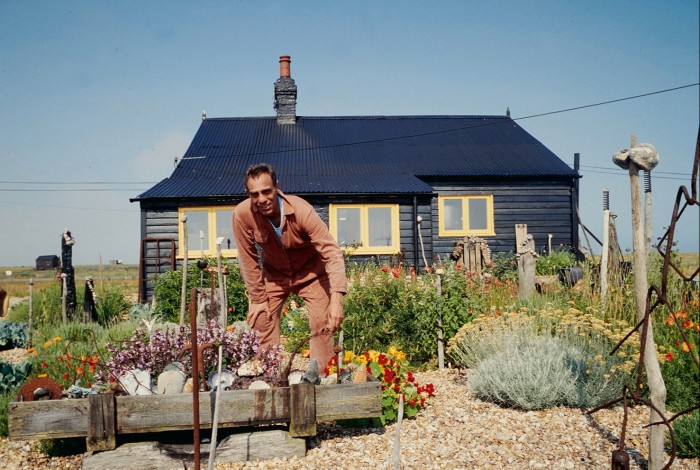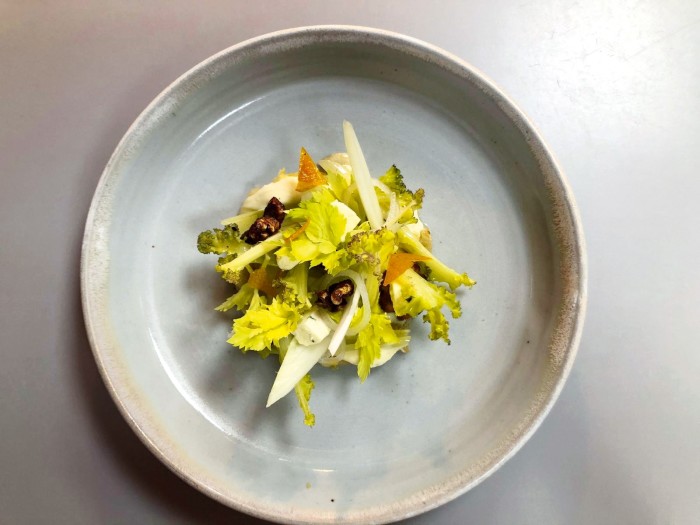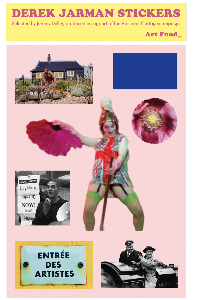Derek Jarman and the holy kale

Roula Khalaf, Editor of the FT, selects her favourite stories in this weekly newsletter.
If you grew up in the 1980s, as I did, chances are your first encounter with the work of Derek Jarman, the avant-garde writer, painter, set designer, filmmaker and gardener, was on MTV. He shot the video for one of the decade’s greatest hits: It’s a Sin by the Pet Shop Boys. Tame in comparison with some of his work, it’s still recognisably Jarmanesque, inspired by the Inquisition. There are monks in cassocks, enough braziers to light a whole season of Game of Thrones and a concrete set that looks like something you might find under a flyover, but so artfully shot that it makes you want to hang out under a flyover.
Jarman is also synonymous for me with a certain kind of late-night telly. Specifically on Channel Four, whose remit when it launched in 1982 was to push boundaries in cultural programming. I got my first glimpse of Jarman’s Sebastiane when it aired as part of its “Banned” season. Stephen Sondheim once scoffed at fellow composer Philip Glass for writing an opera in Sanskrit, because what could be more pretentious, right? But that was nothing compared to Jarman’s 1976 film, which tells the story of the early Christian martyr St Sebastian with dialogue entirely in Latin. Even classical scholars must have been rolling their eyes. That didn’t stop people from queuing up to see it upon its release. Sebastiane was hardly great cinema, but for gay audiences eager to be seen and heard on the big screen, albeit in Latin, it was a film well worth lining up for.

Jeremy Isaacs, the founding chief executive of Channel Four, once described Jarman as “gay in both senses of the word”, meaning he was both a homosexual and a good laugh. Jarman was also HIV positive (he went public with his diagnosis in 1986 and died from an Aids-related illness in 1994, aged 52). Asked in an interview how he’d like to be remembered, he said, “As a flower.” “A pansy?” his companion Keith Collins quipped. “No, a red hot poker,” Jarman replied, with characteristic wit.
It’s an exchange he quotes in his journals Modern Nature, a book published in 1991, spanning the years 1989 and 1990, and recounting Jarman’s struggles as an artist and public figure, as well as his regular trips into London’s Soho: to his beloved Mildred’s for lunch, to Maison Bertaux for cake and to the Algerian Coffee Stores for its “hot Boston” beans, which he’d discovered 15 years earlier and was evangelical about.
The journals take their name from his garden at Prospect Cottage in Dungeness, a fisherman’s shack on the southern coast where he moved after his HIV diagnosis. Resolved to “get as much out of life as possible”, he began cultivating a garden on the inhospitable shingly beach, in the shadow of a nuclear power station.
Though a symbol of Jarman’s resilience, Prospect Cottage is under threat. Following the death of Collins, to whom Jarman bequeathed it, the cottage and its contents are being sold. Through crowdfunding, Art Fund hopes to raise enough money (£3.5m by its 31 March deadline) to secure and conserve the cottage and garden, and create an artist’s residence programme there. In the event, Tate will take archival material from the cottage into its permanent collection, including Jarman’s sketchbooks, letters, photographs and drawings. (You can pledge to the #SaveProspectCottage campaign at artfund.org, and receive a reward from artists including Jeremy Deller, Tacita Dean and Martin Craig-Martin.)

For the moment the spot remains intact. In Modern Nature, Jarman lists the varieties of plants he was growing there: “houseleeks and sedums, thrift, dianthus, saxifrage, campion, wallflower, purple iris, calendula, curry plant, rue, camomile, columbine, shirley poppy, santolina and nasturtium”. It reads like an incantation. Naturally, he also grew red hot pokers, though special mention goes to sea kale, the beautiful, tenacious plant that forms part of the natural barrier against the sea. Jarman describes its sturdy purple leaves in January turning a glaucous green by April, then becoming submerged “by a froth of white flowers” come June, when “their frilly leaves dance a Can-Can amongst the flotsam” at the shoreline.
Though sea kale is edible, Jarman wouldn’t have been allowed to pick any, because the plant is protected under the 1981 Wildlife and Countryside Act. To eat it, we now rely on the cultivated variety. Which brings me to the one spot in England that grows and cooks its own, Raymond Blanc’s Le Manoir Aux Quat’Saisons in Oxfordshire. By Blanc’s own insistence, the heart of this place is the vegetable garden, which he brought his father over from France to help plant some 36 years ago. Blanc makes it sound like penance for all the seed-sowing his papa made him do as a kid.
Sea kale was first grown here in the early 2000s. Now half the crop is forced under terracotta cloches, yielding tender, ivory-coloured stems around March that are sweet, nutty and slightly earthy in flavour. The other half grows uncovered, producing purple-tinged shoots that are a little tougher. Both usually turn up on the menu in a variety of dishes, perhaps served raw in a lemon vinaigrette with fish, or lightly blanched on a plate of Cornish crab ravioli, the stems used like scaffolding under the pasta.
Nothing is wasted. The tender green leaves that unfurl later are sautéed in vegetable emulsion and served with greens; the sweetly fragrant white flowers, which scent the air like honey, are used as garnish. Even the leathery, late-season foliage is whizzed up to make a green smoothie for the troops, which executive head chef Gary Jones compares to Popeye’s spinach for its va-va-voom.
For Jones, much of the appeal of sea kale is its rarity, and the sense of being gifted something precious every spring. Once commonplace, then over-picked by the Victorians, this native coastal plant normally only shows up in a few restaurants, notably Edinburgh’s The Kitchin, where chef Tom Kitchin would serve it steamed with blue cheese and candied walnuts, and London’s Quo Vadis, where chef Jeremy Lee would pair it with a poached egg and spinach, or – on the rare occasion there’s a glut – make a soup that is “the most delicate soup in the world”.
Did Jarman ever try sea kale? In his journals, he writes about gathering elderflower, frying it in batter and sprinkling it with sugar for supper. I like to think he eyed up sea kale in the same way, picked some and ate it steamed with a splodge of butter. He would have been breaking all the rules, but that was something Jarman did best.
Comments